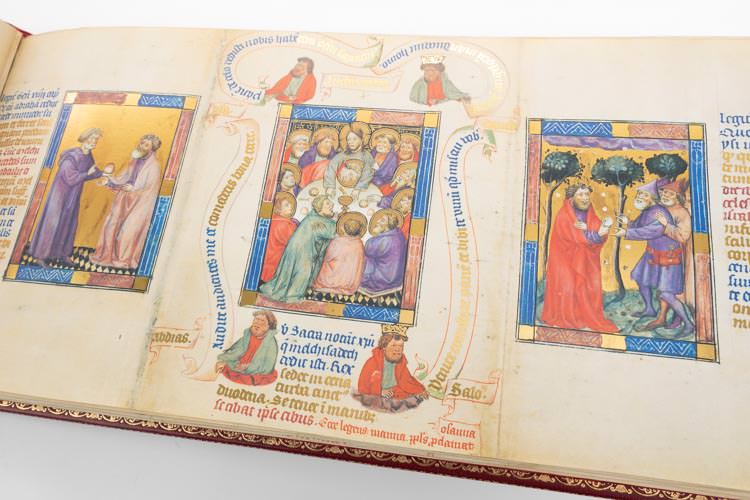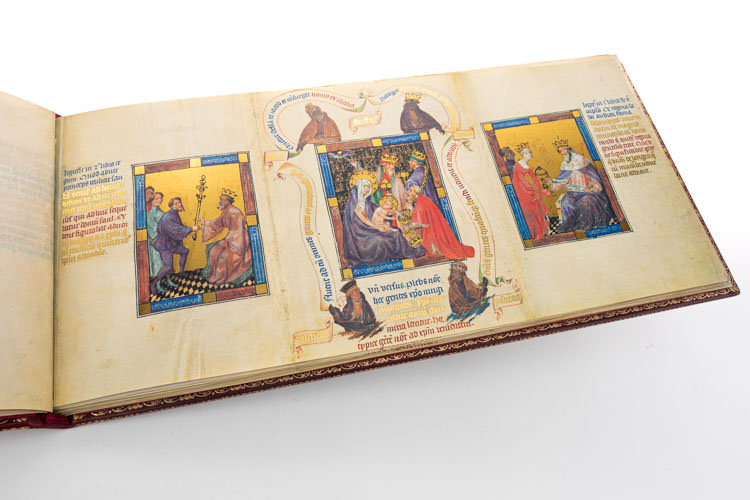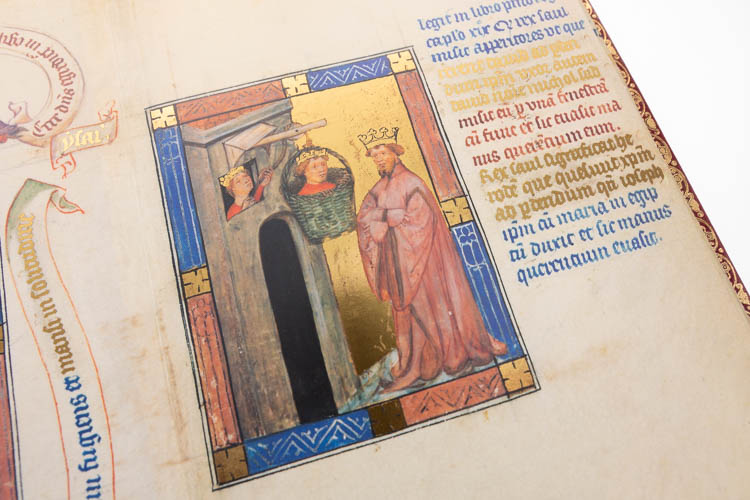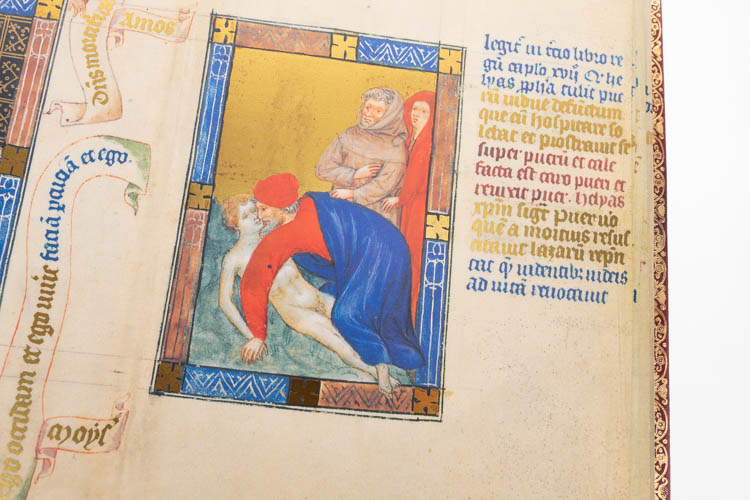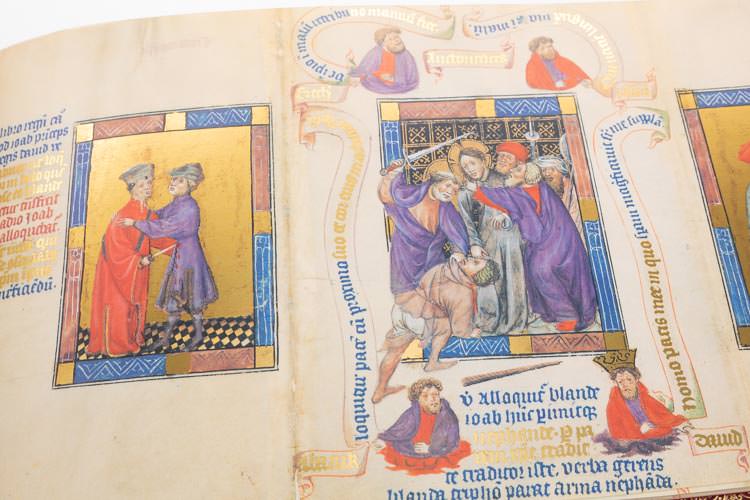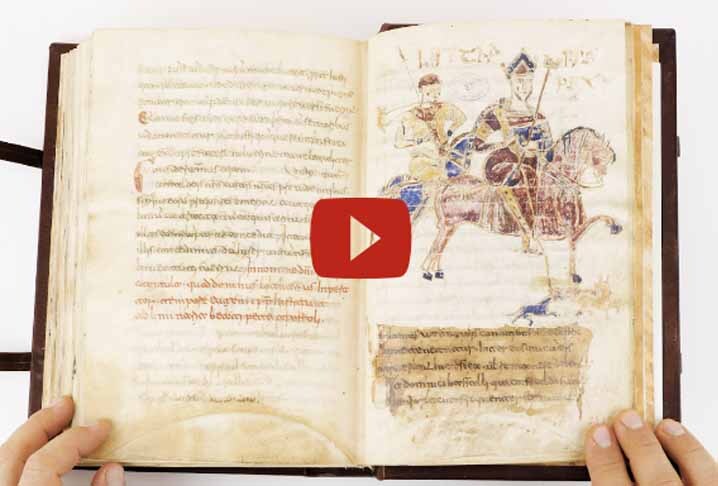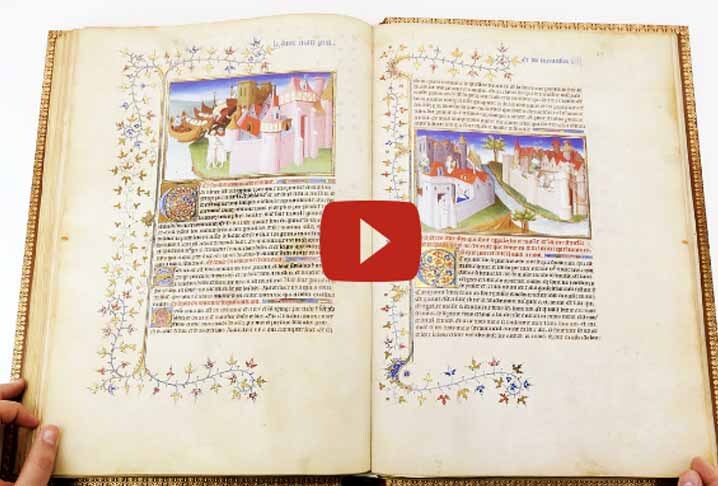Six centuries ago in the Netherlands, innovative manuscript art merged with Gothic style to create a lavish, gold-decorated codex comparing scenes from the Old and New testaments. It is called “Bible for the Poor”, but was it really destined for the common people?

The Golden Bible is a most unusual medieval Bible manuscript, a princely illustrated commentary to the Holy Scriptures. It was made during the first years of the 15th century, at a time when Count Albert’s of Bavaria-Holland (1389-1404) and his second wife Margaret of Cleves’ court at The Hague developed into a new independent center of the arts.
A Golden Manuscript as Bible of the Poor?
The illuminator and author of this magnificent work was presumably the same master who decorated the Book of Hours of Margaret of Cleves which shows obvious similarities in style. Given the high quality of the miniatures and the lavish decoration, it is assumed that the manuscript was destined for royals.
The main purpose of a so-called Biblia Pauperum was to make connections between the Old and the New Testament visible in picture and text, in order to convince the faithful and to contradict the heretical ideas of the Cathari and many other heretical movements present at the end of the Middle Ages.
Originally the manuscript had a different format: its present oblong pages were initially folded twice so that the manuscript looked like a normal codex; the reader had to open the book and unfold the page to view the pictures as they are seen today.
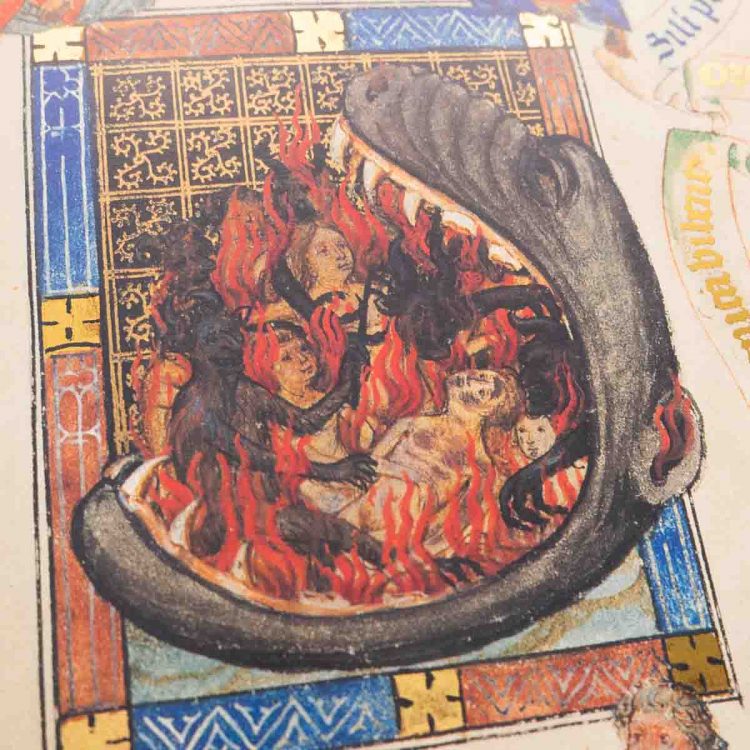
To call such a luxurious manuscript, richly decorated with gold, a “Bible of the poor” seems paradoxical. It goes without saying that this masterful work was by no means created for the common people of bygone centuries, who were mostly illiterate.
While the church had always been aware of the value of religious pictures, recognizing that these were the books of the laity, the great illustrated works of the Middle Ages, especially those which were so magnificently executed as this one, had at no time been known as “Bibles of the poor”. In fact, the word goes back to an incident that occurred at the beginning of scholarship which studied this genre of illuminated manuscripts.
93 de Luxe Miniatures in Silver and Gold
Each page is decorated with three magnificent miniatures. While the central miniature depicts an event from the New Testament, cornered by busts of the four Prophets, the miniatures on both sides show scenes from the Old Testament which were considered as previews for the fulfillment of the message of the New Testament. These fascinating illustrations by an unknown artist boast intense colors and a modern painting technique.
An Enigmatic History
The destiny of the manuscript during the first three and a half centuries is somewhat elusive. However, one inscription, presumably from the 16th century, reveals some information on the owner: Alexander Ratclyffe Boke.
This family name can be traced back in Lancastershire, England, to the Late Middle Ages. In the 18th century, a Ratclyffe descendant donated the manuscript to the English King George III.
The recent binding of the codex in finely tooled red morocco with a fly-leaf in red moire silk goes back to the same century. In 1823, George’s III son donated his father’s library to the State which passed it on to the British Library.
NEW WEEKLY VIDEOS
Find our more about Codex Legum Langobardorum (Cava de’ Tirreni, Biblioteca Statale del Monumento Nazionale della Badia, Cod. Cavense 4) on our website!
Find our more about Marco Polo – The Book of Wonders (Paris, Bibliothèque Nationale de France, Ms. Français 2810, fols. 1r–96v) on our website!


